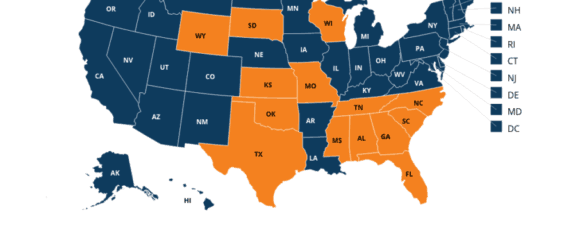In the News
Reuters Institute for the Study of Journalism out of Oxford University released its annual Digital News Report this week, giving us a look at how people around the world are consuming news. The site is worth checking out just to see the many ways they present the information: standard report, 3 minute video summary, a slideshow of infographics that tells the story of the report, a data interactive, and much more.
Here are a few key findings:
- As news outlets put up paywalls, more people in the U.S. are paying for news (16%), but half of all news subscriptions are going to 3 publications (New York Times, Wall Street Journal, and Washington Post). In addition, most people are only paying for one subscription, suggesting limited growth for the subscription model.
- In the U.S., more people with smartphones are finding their news first on social media (43%) than news sites (20%), but they don’t always trust news from social media — only 14% of Americans trust most news from social media most of the time.
- Since Trump’s election, trust in news media has increased for those on the left (53% trust most news most of the time) while it has collapsed for those on the right (9% trust most news most of the time).
The Other 49
Rand Corporation released a new research brief titled, “What Other States Can Learn from Louisiana’s Ambitious Efforts to Reshape Its Education System.” The brief looks at the successes and challenges of Louisiana’s reform efforts in early childhood, K-12, K-12 teacher preparation, and creating pathways to college and work. It concludes with four lessons for other states:
- Large-scale systemic education reforms can be welcomed by stakeholders.
- Multi-pronged communication strategies that elevate voices of educators may be key to creating buy-in for state policies.
- Make sure most high-quality resources are available before hitting “play.”
- Anticipate equity challenges and plan accordingly.
For Your Consideration
UNC Charlotte professor Susan McCarter released a new report examining the “school-to-prison pipeline,” or the idea that schools’ use of law enforcement for disciplinary issues leads to students becoming involved with the criminal justice system. To do this, McCarter looks at the impact of school disengagement (measured by absences and suspensions) on felony bookings in North Carolina.
McCarter found that while students of color and white students were equally likely to be disengaged from school, students of color were much more likely to have a felony booking than white students. These results suggest that the school-to-prison pipeline is not because students of color are more disengaged in school but because students of color are more likely to be booked for a felony than white students. As McCarter said, “The way our kids are being processed in the system is affected by the color of their skin.”
What we're reading
In state health report cards, North Carolina falls below average
In a report released this week, nonprofit research foundation The Commonwealth Fund ranked North Carolina 34th out of 50 states and Washington, D.C in terms of overall health performance.... Read the rest-
Potential voters are fastest-growing segment of NC Hispanic population
-
Inside America’s Child Care Crisis: Even After a ‘Historic’ Federal Investment, Today’s System Only Serves 1 in 6 Eligible Kids. Could More Funding Now Be on the Way?
-
Rural students often go unnoticed by colleges. Can virtual counseling put them on the map?
-
Coaxing Veterans Into Treatment to Prevent Suicides
-
Mid-Sized Farms Are Disappearing. This Program Could Reverse the Trend.
-
Retirees Might Run Out of Money 10 Years Before They Die


